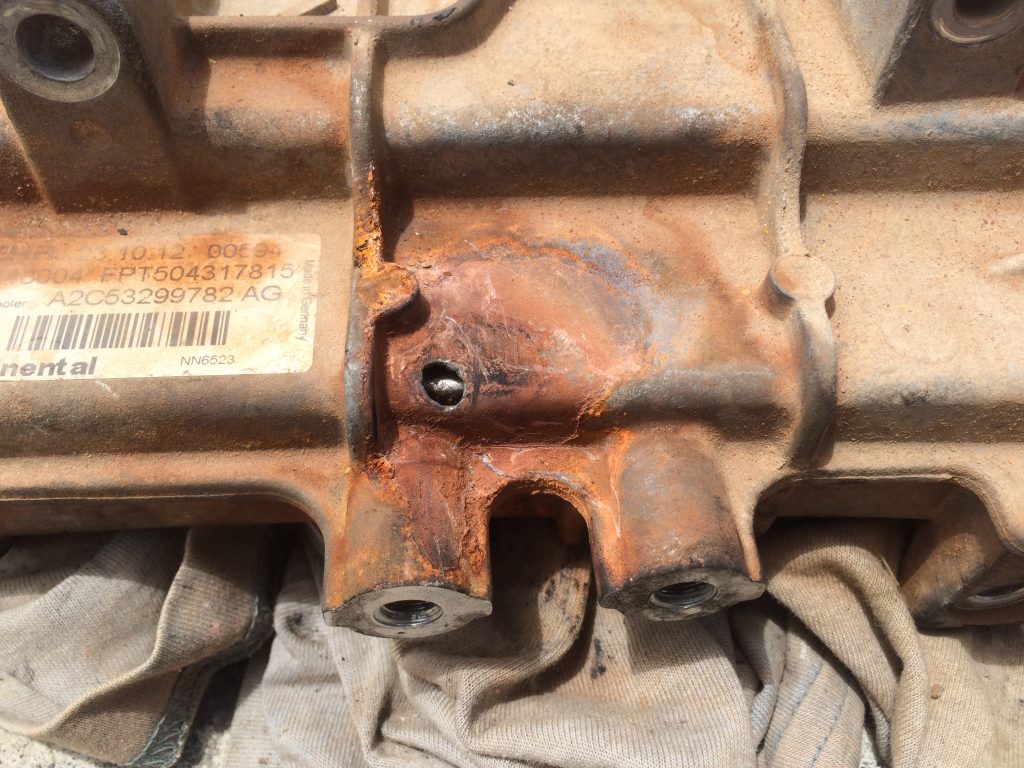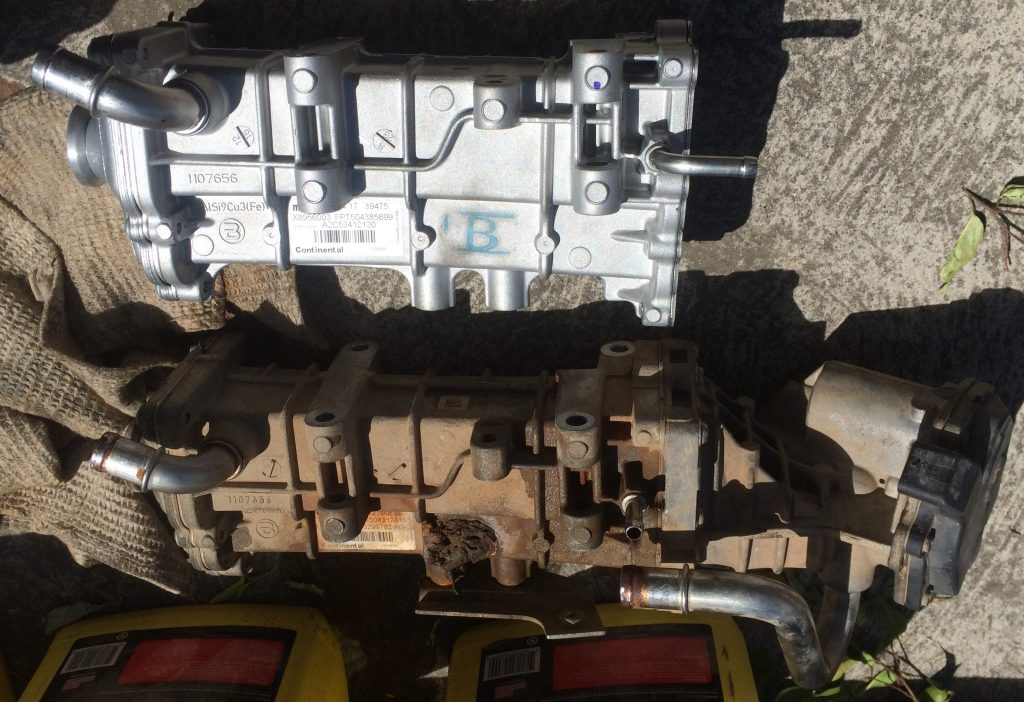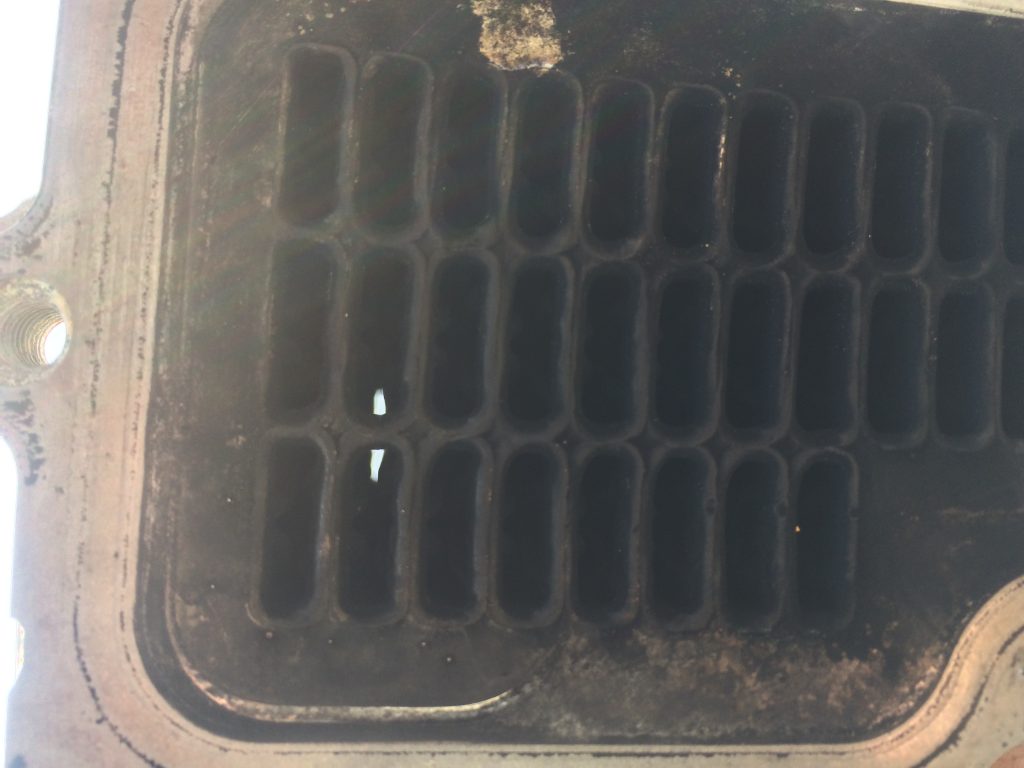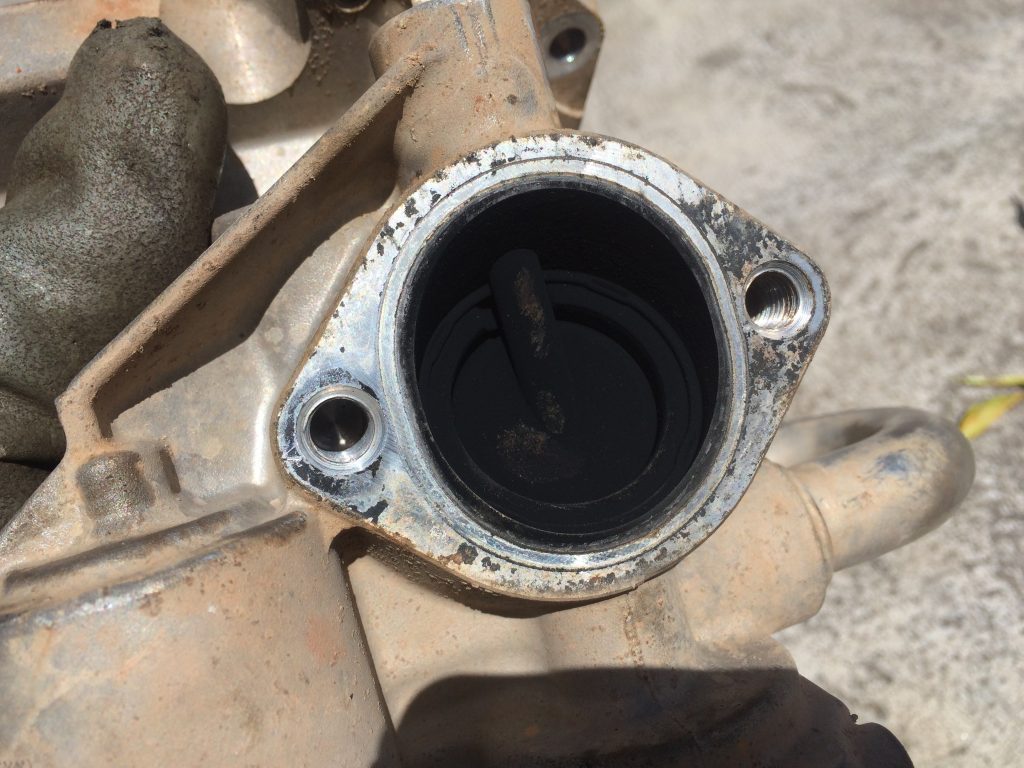While driving through the Amazon jungle we had that horrible sight of steam coming out from under the bonnet! I quickly stopped and could see a jet of water coming from the EGR. Once the engine cooled down, I made a quick roadside repair using a two-part leak repair compound and we were on our way again within 30 mins.

You can clearly see the hole that appeared in the EGR water jacket
The hole in the EGR was in the upper surface and appears to be a manufacturing fault, maybe a bubble in the casting, or some other fault. The hole was about 3 mm across so the cooling water came out quickly. I wanted to replace this section of the EGR as quickly as possible. Rather annoyingly, the parts catalogue for the Daily 4×4 only lists the entire EGR as a part, not the individual sections. However, the Daily 4×2 has the EGR heat exchanger that I needed, listed as a separate part to the control valve and so was over £100 cheaper. I therefore ordered the part for the Daily 4×2. When the replacement part arrived, I found the vent pipe for the coolant was slightly different to the one on my truck, but it could easily be worked around with a slightly longer hose on that pipe.

New and old EGR
I was quite interested to see the state of the EGR after 141,000 km running on some questionable quality fuel. The main argument for turning off EGR devices or installing a blanking plate, is to stop soot going through the EGR. Take a look at the photo… my EGR is clear! There’s no build-up of soot in the EGR heat exchanger or the control valve. This de-bunks one of the myths about emission systems being undesirable for overlanding in diesel vehicles in South America.

You can see how clean the EGR is in this photo

The EGR valve is also clean
Hey… was this useful? If so, you might like to support our website costs with a donation below. Thanks 😊👍
